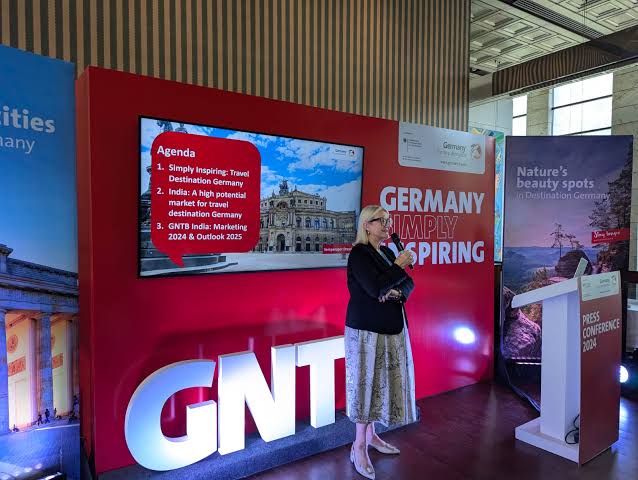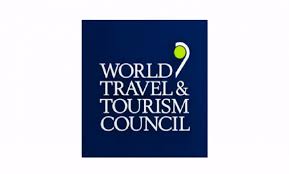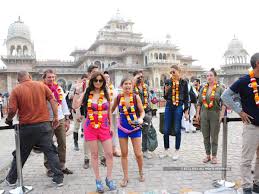Booking.com in collaboration with Accenture, unveiled the second edition of its comprehensive annual report, ‘How India Travels 2024 – The Inbound Edit’.
The report sheds light on the inbound travel sector’s strong recovery, while uncovering evolving traveller preferences and motivations, its impact on the Indian economy and emerging trends.
India’s travel renaissance: A global travel hub fuelling economic growth
With over 9 million foreign tourists visiting India in 2023, the report highlights India’s transformation into a global travel hub. This is attributed to the country’s rich cultural heritage and diverse landscapes, coupled with strong rankings in price competitiveness, air transport and infrastructure making it a top destination in South Asia. The surge in tourism has resulted in positive economic benefits. Foreign Exchange Earnings (FEEs) from tourism have increased, reaching USD 15.3 billion in the first half of 2024, a 17.6% increase from 2023 and a 5.5% jump from 2019. The influx of international visitors is catalysing the local economy, potentially generating 58 million jobs by 2033. With tourism projected to contribute approximately USD 512 billion to India’s GDP by 2028, a substantial increase from 2023, the industry exhibits robust recovery and growth trajectory.
Key insights and trends on the inbound traveller
The report also unveils key trends shaping inbound tourism and the mind set of international travellers detailing their preferences, motivation and what they seek from their experiences in India. These insights were gathered through a combination of external data and a survey commissioned by Booking.com among travellers who intend to travel to India in the next 12-24 months.
● Geographic diversity: More than half (52%) of inbound travellers seek India as a standalone destination, while a third (22%) intend to combine their visit with other Asian countries. This trend highlights India’s growing role as both a primary destination and stopover in regional travel plans.
● Shifting source markets are transforming the travel landscape: The US, United Kingdom, Germany and United Arab Emirates have emerged as top inbound source markets for India based on Booking.com search data as compared to 2023, reflecting a shift from traditional frontrunners like China, Canada and Bangladesh. Hong Kong, Australia, Italy and Netherlands were new entrants in the top 10 inbound source markets.
● Beyond the metros, off-the-beaten path destinations rise in popularity: While major cities like Delhi, Mumbai, Bengaluru, Jaipur and Chennai remain popular and have consistently ranked as the top five cities in terms of searches, less conventional destinations are gaining traction. Off-the-beaten path destinations like Hampi and Leh rising in popularity, showcasing India’s diverse tourism offering. Other emerging destinations like Patnitop, Pahalgam, Madikeri, Vijayawada, and Khajuraho among others have shown a 2X or more year-on-year growth.
● Repeat visits driven by positive experiences: Nearly half (44%) of inbound travellers have experienced India and want to visit it again. 40% are eager to explore India for the first time. Travellers aim to explore multiple destinations within India. 41% intend to visit 2-4 destinations, while 35% plan to cover 5-10 locations, showcasing their desire for diverse experiences.
● The rise of digital traveller: India’s inbound tourism has evolved rapidly since 2019. Travellers are now seeking more personalised and flexible experiences with online platforms playing a crucial role. A majority (52%) of travellers prefer to book complete travel packages, while 40% opt to book individual components separately.
Navigating the road ahead: Challenges and opportunities for India’s tourism industry
India continues to leave a lasting impression on the majority of returning travellers, with an overwhelming 95% reporting that their experience either met or exceeded expectations. Nonetheless, there are a few hurdles that travellers face while planning and booking a trip to India. Survey responses indicate that limited customization options (49%), lack of bundled packages that combine flights, accommodation and activities into a seamless travel experience (51%) and information overload (43%) can hinder traveller experiences. Many international travellers also seek personalised itineraries and seamless travel planning but find it difficult to achieve. These challenges open up great opportunities for the industry to come together and improve personalisation, expanding digital resources and tackle health and safety concerns to create a more enjoyable experience for new and returning travellers.
Similarly, expanding direct international flights, simplifying visa processes, and continuing to promote India’s diverse travel landscapes and experiences will aid the acceleration of tourist arrivals. This can be achieved through a collaborative approach between various stakeholders, backed by targeted investments, which will help India reach new heights in global tourism.
Commenting on this, Mugdha Sinha, Director General (Tourism), Government of India, Ministry of Tourism said, “Vision 2047 for Tourism aims to elevate India’s inbound tourism by tenfold, positioning us as a premier global destination. With technology and big data as transformative drivers, we are not just upgrading infrastructure, but also leveraging tourist behaviour analytics to tailor our offerings. From wellness and adventure tourism to responsible travel, we’re committed to delivering a seamless, enriching experience. Our focus on safety, hygiene, and connectivity ensures that every visitor experiences the best of India, driving both employment and GDP growth in the creative economy.”
“India’s inbound tourism sector is experiencing unprecedented growth, fuelled by its rich cultural heritage, diverse landscapes, and warm hospitality,” said Santosh Kumar, Country Head, Indian subcontinent & Indonesia at Booking.com. “Our latest report ‘How India Travels 2024 – The Inbound Edit’ highlights the growing appeal of India as a global destination, with a surge in foreign tourist arrivals and a strong preference for unique experiences.
This is also reflected in India’s 39th rank on the World Economic Forum’s 2024 Travel & Tourism Development Index, up from 54th in 2021. As travellers seek authentic connections and immersive journeys, India’s ability to offer a diverse range of experiences, from bustling cities to serene landscapes, is proving to be a major draw. We at Booking.com remain committed to supporting India’s tourism industry by providing partners with the necessary tools and resources, while enabling travellers to plan seamless and unforgettable journeys.”
“India’s tourism industry is currently defined by transformation-led growth, driven by rich, authentic experiences and increasing purchasing power of consumers. Today, it offers diverse options for both budget and luxury travellers, supported by strategic government initiatives and ongoing efforts to modernise the travel infrastructure. To enhance India’s appeal further, it is crucial to leverage technology specially data, analytics, AI, and generative AI to streamline operations and improve the entire traveller experience—from inspiration to planning and booking through post-trip advocacy. This will help strengthen India’s position on the global tourism map, while ensuring visitors leave with unforgettable memories and a desire to return,” said Anshul Gupta, Managing Director and Travel lead for Advanced Technology Centers in India, Accenture.





